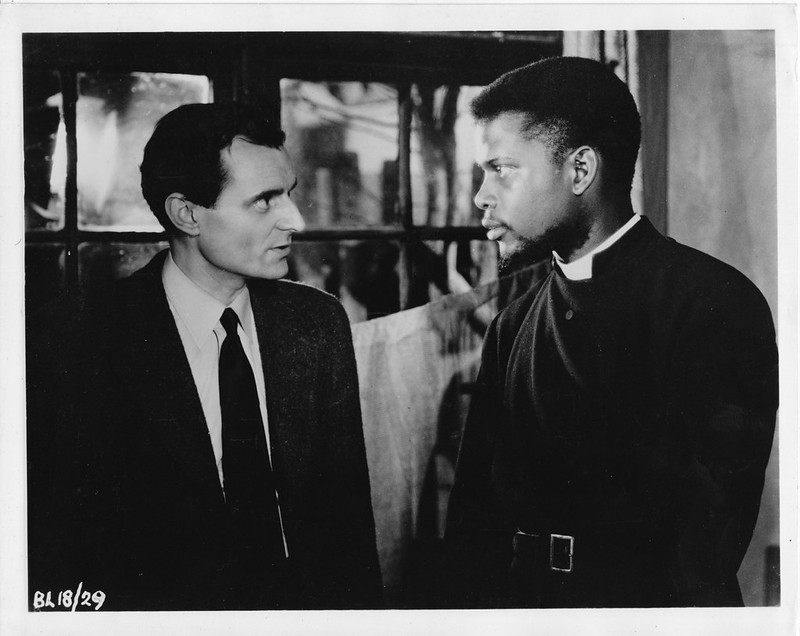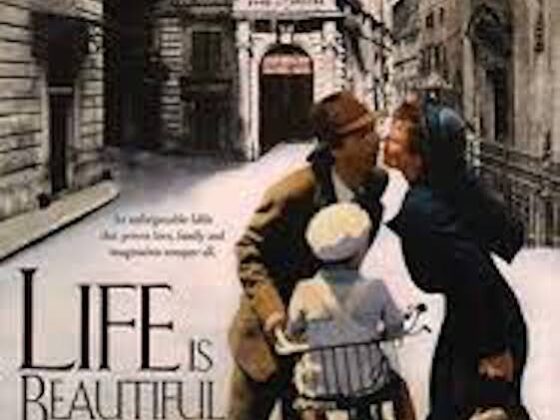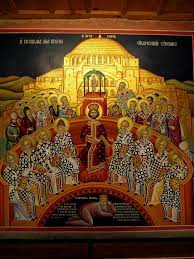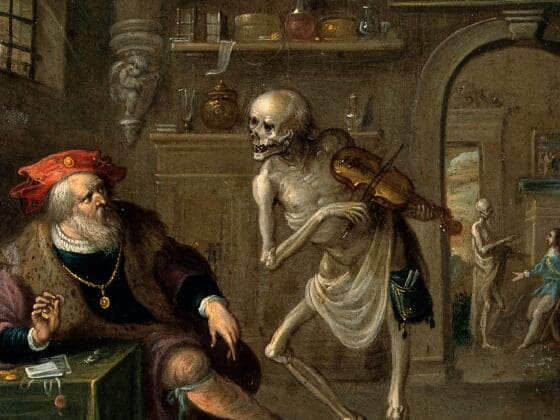I would wish to have a crisper definition of systemic racism.
It seems to me that systemic implies an established system of laws and institutions. Apartheid in South Africa was that, in spades. It was certainly the case of the slave system in America before the Civil War and of the Jim Crow system after Reconstruction. After the civil rights court decisions and national legislation of the 1950s and ’60s, I simply don’t see it. If anything, affirmative action laws and regulations are more systemic than anything overtly “systemically racist” today. There is probably a need to reform policing, but the idea that police are institutionally racist is, I think, a simplistic dogma that covers a wide variety of factors, including the culture of police unions and of inner cities and the mandate of government to maintain civic order (Rom 13:1-5; 1 Peter 2:13-17).
Secondly, racism, it seems to me, implies an –ism, a public ideology and approved narrative, like Marxism or Nazism. Once again, there was an ideology of slavery before the Civil War, based on theories of genetic and cultural inferiority of Africans, bolstered by strained interpretations of a few biblical passages and by a romantic mythology of Southern plantation life. After the Civil War, progressive Darwinism was used to justify the supremacy of the white race, a theme picked up by the Nazis and used against the Jews and other ethnic groups. The narrative of the Lost Cause dominated much of the Jim Crow South and was used to justify the glorification of all things Confederate and to excuse the horrors of the Ku Klux Klan (see The Birth of a Nation). But how many people will publicly advocate this view today? White supremacy as an ideology and narrative has been relegated to fringe conspiracy theories followed by internet cranks and losers, some of them dangerous and deadly individually but publicly denounced and stigmatized by mainstream Americans, conservative and liberal.
In fact, if one wants to identify a systemic factor in the rise of black inequality in our day, one needs look no further than the Great Society poverty programs that failed to address and even exacerbated the disintegration of black families. This failure has led to 75% of black children being raised in single-parent homes, compared to 58% in Hispanic, 37% in white, and 21% in Asian homes. It is revealing that a popular online video on systemic racism comparing young “Kevin” and “Jamal” fails to mention this factor and places both children in intact families.
Churches black and white, weakened in part by the shift in attitudes from Martin Luther King, Jr. to the Black Power movement and by the ideological rise of the Sexual Revolution, largely failed to confront and counteract this policy flaw and the resulting social pathologies. Hence in addition to the black lives lost to drug addiction and gang warfare, millions of black babies never saw the light of day.
Racism as a public institution and a rational ideology can be debated and defeated over time – and it has been with considerable success over the past fifty years. However, by “systemic racism” today’s proponents are referring to a structure of the (white) human psyche – “unconscious bias” or “internalized oppression” they are calling it – which is indelibly fixed according to genetics. “Whiteness” is as unchangeable as maleness or femaleness. (Oops! I forgot about the Kinsey scale of human sexuality.) What are we to make of a biracial person like Barack Obama? Is he half-racist? Does Elizabeth Warren’s 1,024th drop of Native American blood exempt her from whiteness? One hears in this current ideology echoes of past claims that even one drop of black blood makes a person legally black. One also perceives a faux Freudianism that sees human nature governed ultimately by forces of the unconscious mind.
Not to say individuals and societies are purely rational agents, but in this case we are talking about prejudice, and white racial prejudice in particular, which certainly continues to exist among individuals and communities, including churches. Even here, however, I would argue that few today will openly admit to this racial prejudice. No doubt some will express it behind closed doors in “safe” company. Some may signal it by plastering a Confederate flag on the bumper of their four-by-four. For others, it may linger as a kind of unconscious taboo. For instance, a person may be quite tolerant in dealings with black co-workers but could not imagine his son or daughter marrying a black person. Racial prejudice may be mixed in with other prejudices, involving class or ethnic status, or with economic self-interest.
The changes in American society caused by the civil rights movement and enacted into law and ensconced in institutions have had a major impact on the attitudes of Americans as a whole, as signaled by the election of the first black President. Many residual prejudices remain among the older generation, not to mention the “alt-right” attraction for a certain kind of alienated whites like Dylan Roof and Robert Bowers, but this is hardly what I would call systemic racism (see *endnote).
Antiracism is becoming much more prevalent today as a public ideology, especially among elites. White Fragility teaches that white racism is ineradicable and can at best be acknowledged along with a handover of property and prestige to “Blacks,” no questions asked. Jemar Tisby, in The Color of Compromise, appears to hold to a version of this ideology applied to the church: “An honest assessment of racism should acknowledge that racism never fully goes away; it just adapts to changing times and contexts” (page 154). Conversely, Shelby Steele argues that the antiracist ideology is a feature of the post-civil rights era whereby black power fills the moral vacuum conceded by White Guilt.
In truth, the indiscriminate accusation of white supremacy is part of a larger neo-Marxist program of cancelling Western and Christian civilization. It should come as no surprise that Black Lives Matter has a much wider set of aims, such as the disruption of the nuclear family and the promotion of the LGBTQ agenda (tellingly, BLM has recently taken down its “What We Believe” section). Black Lives Matter won the first round of the branding war, but it may have squandered that advantage in its support of the subsequent riots and violence against police. Tisby writes: “It may be helpful for Christians to distinguish between Black Lives Matter as an organization and black lives matter as a concept and a movement” (pp. 180-181). It would be “helpful” if Tisby would publicly denounce the radical agenda of BLM. Instead he blames those Christians who believe black lives matter because all lives matter to God, claiming that such a view is “a failure to acknowledge the subtler ways that racism operates today.”
One of those Christians is John Perkins, a patriarch of the civil rights movement, who writes in his recent book, One Blood: Parting Words to the Church on Race and Love (2018):
The Church must speak out with one voice against bigotry and racism. We have been too quiet. The time is now. A platform has been placed in front of us and we must speak with clarity and truth. We’ve made a mess of things, but there is a path forward. It will require us to hold fast to his vision for one Church and the biblical truth of one race. We need to lament our broken past and be willing to make some personal confessions and move toward true repentance. We must be committed to the fight until the battle for reconciliation is won. (page 174).
I do not think systemic racism is an adequate description of where our country and our church are in 2020; however, I do not wish to quibble over terms. There is no doubt that John Perkins and many other black people have experienced race hatred face to face, down to the present. If they call it racism, who am I to correct them? What I do argue is that such racism is no longer the driving engine of race relations in the United States and that the term has been coopted by a movement that sees separation, not unity, as an intractable reality. In Alan Paton’s great novel of South Africa, Cry the Beloved Country, the the black priest Msimangu expresses this hope and fear:
I see the one hope for our country, and that is when white men and black men, desiring neither power nor money, but desiring only the good of their country, come together to work for it…. I have one great fear in my heart, that one day when [the whites] are turned to loving, they will find we are turned to hating.
Coming on Friday: A Favorite Film review of Cry the Beloved Country.
This is the sentiment, I think, motivating John Perkins’s “parting words to the Church”:
Well … I’ve had my say. I believe that if we can get it into our heads and our hearts that we are one, we will make it. We are one human race. We are one blood, all created from one man, Adam. And we are saved by one blood – the blood of Jesus, the Son of God who gave His life to reconcile us to the Father – and to one another…. (page 171)
To which, I will simply add, “Amen.”
***
*Endnote: Recent news headlines announced: “Homeland Security report finds White supremacy ‘the most consistent and lethal threat.’” The 25-page Homeland Threat Assessment devotes two pages to Domestic Violent Extremists (DVEs), and among them racially and ethnically motivated white supremacist extremists (WSEs). It states that for 2018-19, DVEs committed 16 attacks killing 48, and among these WSEs committed eight attacks killing 39. I do not know how Homeland Security defines an “attack,” but I was able to determine that in two attacks in Pittsburgh and El Paso, Dylan Roof and Patrick Crusius killed 34 people. The Report does not give figures for 2020, but it does state that in “100 days of violence and destruction in our cities,” DHS enforcement officers suffered over 300 separate injuries “perpetrated by anarchist extremists.” On October 7, the FBI broke up a plot by a self-styled “militia” to capture Michigan Gov. Gretchen Whitmer. From initial data, it appears that the conspirators were DVEs, but whatever racist view they harbored was secondary to their hatred of government. I do not cite these facts and figures to deny the existence of white supremacist groups or their overlap with other domestic terrorists but to question whether this evidence warrants the verdict of that systemic racism is spread across America.
Credit: Sidney Poitier as Rev. Msimangu in Cry the Beloved Country (1951) Flickr Commons





